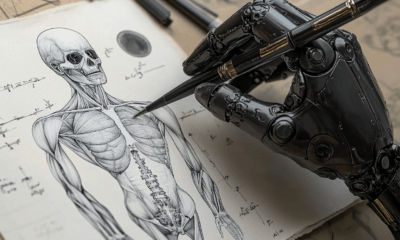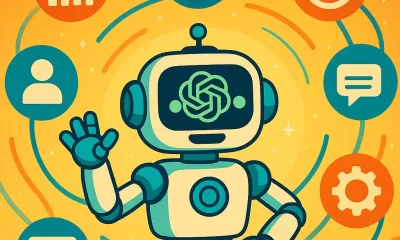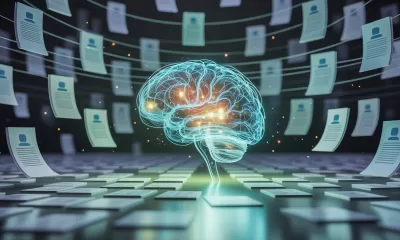Chatbots
What Magic Is This? Real-Time AI Image Generation Creation Now Possible!
SDXL Turbo leads the way in AI image generation, empowering Asian artists and designers with real-time creativity.
Published
1 year agoon
By
AIinAsia
TL;DR:
- Stability.ai’s SDXL Turbo revolutionises AI image generation with single-step processing
- Real-time AI image generation opens new doors for creativity and design efficiency
- Asia emerges as a significant player in AI and AGI advancements, reshaping global tech landscape
Imagine summoning any image you can conceive, in real-time, directly from your mind. That’s the breathtaking potential offered by Stability.ai‘s groundbreaking new text-to-image generator, SDXL Turbo. This revolutionary technology marks a significant leap forward in the burgeoning field of AI-powered image creation.
Faster and Simpler: The Power of SDXL Turbo
Forget waiting for images to render. SDXL Turbo uses a novel technique called “Adversarial Diffusion Distillation” to generate high-quality images in a single step. This means you can see your vision come to life instantly, opening up a world of possibilities for artists, designers, and anyone who wants to explore the creative power of AI.
User-Centric Design for All
While the technical advancements behind SDXL Turbo are impressive, the real magic lies in its user-centric design. The single-step generation process makes it easier than ever to bring your ideas to life, removing the technical barriers that previously stood in the way.
Setting New Standards in AI Image Generation
With SDXL Turbo, Stability.ai has set a new standard for AI image generation. This technology isn’t just faster and easier to use, it also produces high-quality results that rival other leading solutions. From Google’s image search integration to Amazon’s AI efforts, the field of AI image generation is rapidly evolving, and SDXL Turbo is poised to lead the pack.
See It in Action
Witness the power of real-time image generation firsthand with this YouTube video showcasing SDXL Turbo’s capabilities. Prepare to be amazed at the speed and precision of this transformative technology.
Prompt: “a green squirrel wearing sunglasses running through a sandpit at the seaside”

A New Era of Creativity:
The arrival of real-time AI image generation opens a new chapter in creative expression. Artists can now experiment with new ideas and iterate on their work with unprecedented speed, while designers can generate high-quality visuals for projects in a fraction of the time. The possibilities are truly limitless.
Join the AI Revolution:
Whether you’re an experienced artist or simply curious about the potential of AI, SDXL Turbo offers a unique opportunity to explore the future of image creation. This technology is just the beginning of what’s to come, and it promises to revolutionise the way we think about and interact with visual media.
Incredible. Try it now.
Comment and Share: Real-time Text-to-Image generator
What do you think about the potential of AI-powered image generation in Asia? Share your thoughts on how SDXL Turbo and similar technologies might impact the future of art and design. Don’t forget to subscribe for updates on AI and AGI developments and share your experiences with these cutting-edge technologies in the comments below!
You may also like:
- How Creative Agencies are Leveraging AI For Design
- Unleash Your Creativity: AI Image Generation Takes Flight
- AI Art in Asia: Harmony, not Hostility, in the Creative Renaissance
Author
Discover more from AIinASIA
Subscribe to get the latest posts sent to your email.
You may like
-


Revolutionising AI Art: FLUX.1 Challenges Midjourney and DALL-E
-


Auraflow: The Open-Source AI Image Generator Challenging Stable Diffusion 3
-


5 of the Best AI Image Generation Tools (2024)
-


Stability AI in Turmoil
-


Microsoft’s AI Image Generator Raises Concerns over Violent and Sexual Content
-


Is Google Gemini AI Too Woke?
Business
Sam Altman: A ChatGPT Revolution Across 3 Key Industries
ChatGPT revolutionises industries in Asia with increased productivity and innovation.
Published
1 year agoon
January 27, 2024By
AIinAsia
TL;DR:
- A ChatGPT revolution is upon us and transforming coding, education, and healthcare industries with significant productivity gains.
- AI-powered tools in education enhance personalised learning, while healthcare sees benefits in administration and research.
- Embrace ChatGPT as a collaborative tool with caution, as it continues to evolve and improve.
ChatGPT’s Impact on Coding, Education, and Healthcare
ChatGPT, the AI-powered language model developed by OpenAI, is revolutionising industries across the globe, particularly in coding, education, and healthcare. CEO Sam Altman identifies these three sectors as primed for a productivity revolution. Let’s explore how ChatGPT is driving change in these areas and its potential impact on Asia.
Coding at Warp Speed
Altman claims that ChatGPT can triple programmers’ output by assisting with code review, test case generation, and code generation. In a conversation with Bill Gates on the “Unconfuse Me” podcast, Altman stated, “Coding stands out for its potential gains. OpenAI’s GPT-4 is already deployed at scale, significantly accelerating workflows.” However, a 2023 Stanford-Berkeley study indicates a 50% error rate on programming tasks, requiring coders to exercise caution and verify the AI’s work. The ultimate goal is to free up mental resources for creative problem-solving and innovation.
Revolutionising Education
AI systems like ChatGPT enable educators to create personalised learning paths and automate administrative tasks. AI-powered language learning assistance could transform education in Asia, where English proficiency is highly sought after. Bill Gates champions ChatGPT’s role in powering personalised tutoring, saying in a keynote talk at the ASU+GSV Summit, “The AIs will get to that ability to be as good a tutor as any human ever could.” While concerns about AI-facilitated cheating persist, the potential benefits for learners cannot be ignored.
Healing with AI
Although ChatGPT’s clinical application remains limited due to error risks, AI tools can alleviate administrative burdens for doctors, analyze research, and educate patients. Pharmaceutical companies are also leveraging ChatGPT to automate drug discovery and research. The Gates Foundation is committed to using AI for solving healthcare challenges in developing nations, including those in Asia. As Altman noted, “These are the stupidest the models will ever be,” implying that AI capabilities will only continue to improve.
Embracing the Future with Caution and Understanding the ChatGPT Impact
As ChatGPT continues to evolve, it is crucial to approach its integration with critical thinking and caution. By embracing AI as a collaborative tool, we can harness its power to boost productivity, creativity, and impact across various industries in Asia.
Comment and Share on this ChatGPT Revolution
Have you experienced the transformative power of ChatGPT or other AI tools in your industry? Share your stories and subscribe for updates on AI and AGI developments shaping our future.
You may also like:
- Sam Altman: It’ll be powered by Fusion, But Not Quite Skynet
- The Impact of AI on Coding: A Look at Amazon CodeWhisperer
- Masterclass: Crafting Effective ChatGPT Prompts in Healthcare in 2024
- Or read the official blog from Bill Gates on his thought around the AI by tapping here.
Author
Discover more from AIinASIA
Subscribe to get the latest posts sent to your email.
Chatbots
The Quiet Revolution: Asia’s Shift to Custom AI Chatbots
Asia’s AI revolution favours custom chatbots for efficiency and cost-effectiveness, marking a shift from universal AI solutions.
Published
1 year agoon
January 27, 2024By
AIinAsia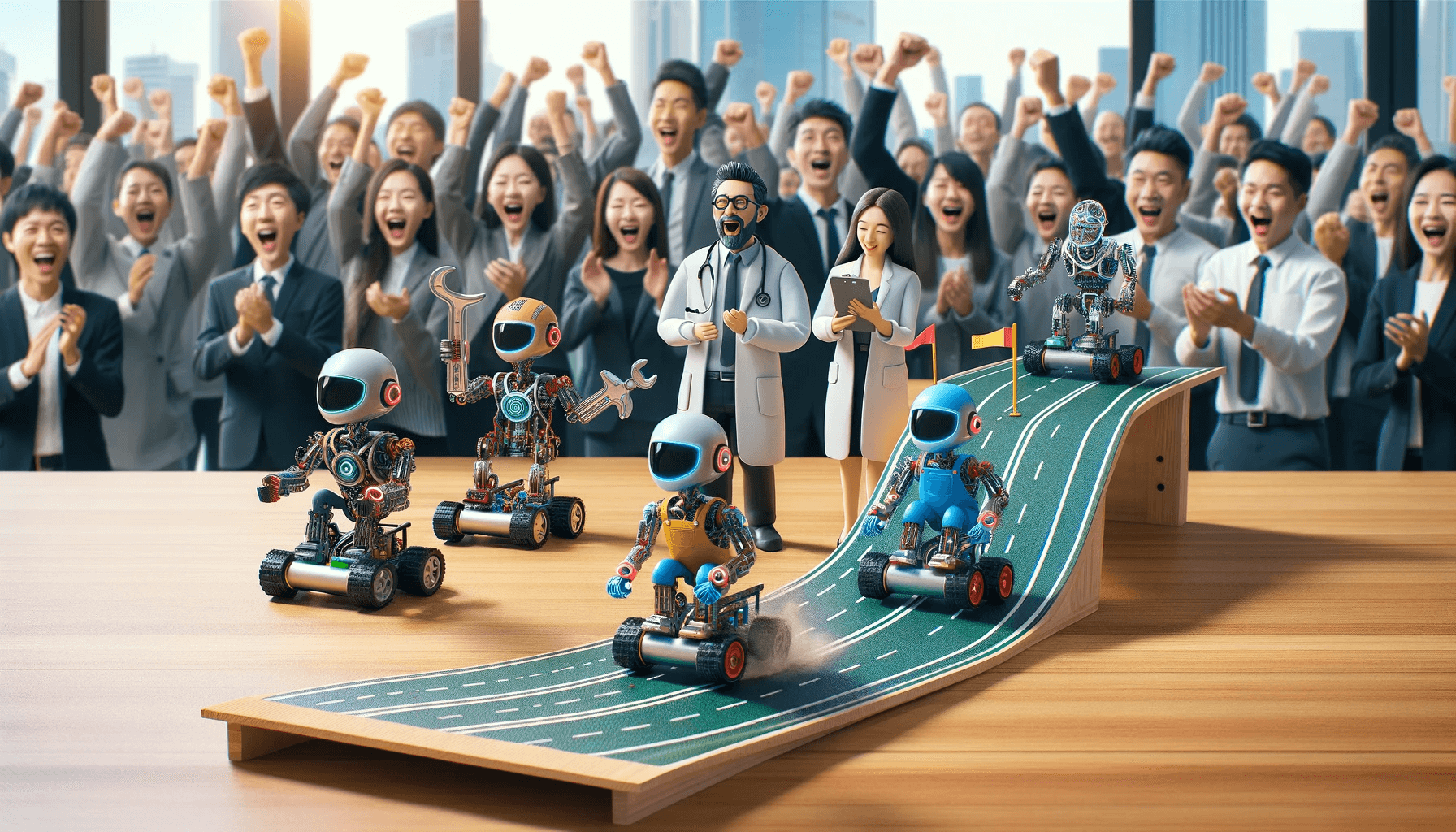
TL/DR:
- Asia is increasingly adopting niche AI models over one-size-fits-all solutions for greater efficiency and cost-effectiveness.
- Experts predict a future where specialised AI bots handle different tasks throughout the day.
- OpenAI’s future remains uncertain as hardware advancements and niche models reshape the AI landscape.
Asia’s AI Revolution: Tailored Solutions Over One-Size-Fits-All
In the world of artificial intelligence (AI), OpenAI’s ChatGPT may be the reigning champion. But there’s a quiet revolution is unfolding in Asia, where companies are opting for custom AI chatbots over universal solutions. These task-specific assistants, such as Salesforce’s Einstein, cater to unique business needs, offering enhanced efficiency and cost-effectiveness.
The Rise of Niche AI: A New Dawn for Specialised Bots
Salesforce’s Einstein is a prime example of this shift. Trained on both internal and open-source data, it excels at coding assistance and workflow automation. However, it doesn’t compete with ChatGPT’s creative writing capabilities. This trend reflects a growing belief in Asia: smaller, targeted models provide precise solutions without the resource-intensive demands of giants like GPT-4.
Professor Yoon Kim of MIT supports this view, suggesting that niche AI could create a future where we interact with specialised bots for different tasks throughout the day. Braden Hancock, CTO of Snorkel AI, shares this sentiment, noting that clients, particularly in finance, are embracing niche models for customer service or coding assistance.
OpenAI’s Future: A Tale of Two Scenarios
Despite the rise of niche AI, OpenAI’s future remains intriguing. Amin Ahmad, CEO of Vectera, envisions two possibilities. In one, hardware advancements make GPT-4 universally accessible. In the other, an influx of niche large language models (LLMs) fuels intense competition. This latter scenario could explain OpenAI’s recent push for AI regulations, a potential strategy to maintain its lead in a diversifying market.
Asia’s AI Revolution: A Paradigm Shift in the Industrya
Asia’s embrace of niche AI signifies a paradigm shift in the industry. The region is demonstrating that smaller, specialised models can be as powerful, if not more efficient, than their larger counterparts. While OpenAI’s influence remains significant, Asia’s AI revolution is subtly forging its own path, prioritising practicality, efficiency, and tailored solutions.
Comment and Share:
What’s your take on the shift towards niche AI models? Have you experienced the benefits of custom AI chatbots in your work or daily life? Share your thoughts below and don’t forget to subscribe for updates on AI and AGI developments in Asia.
You may also like:
- How to Use ChatGPT
- Hybrid AI Ecosystems: The Next Wave of Innovation
- 10 Amazing Prompts to Create AI-Powered Phone Wallpapers (with Freebies!)
- Read more about Salesforce Einstein by tapping here.
Author
Discover more from AIinASIA
Subscribe to get the latest posts sent to your email.
Chatbots
OpenAI Slashes Prices and Tackles ‘Lazy’ GPT-4
OpenAI’s price drop and updates to impact AI growth in Asia.
Published
1 year agoon
January 27, 2024By
AIinAsia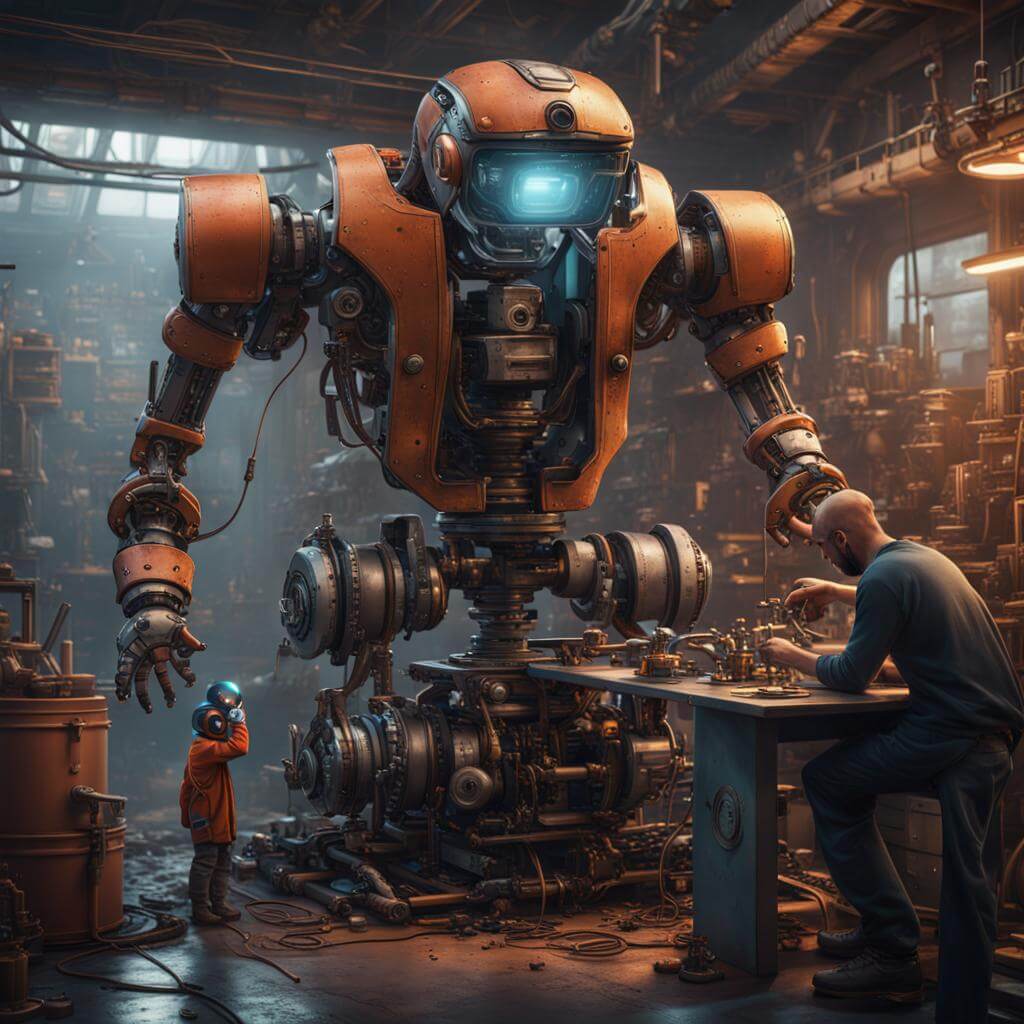
TL;DR:
- OpenAI price drop for GPT-3.5 Turbo, making AI more accessible
- GPT-4 Turbo’s ‘laziness’ issue addressed in new update
- Upcoming GPT-4 Turbo with vision and improved moderation tools to boost AI applications,
AI enthusiasts and developers across Asia, rejoice! OpenAI, a leading AI research and development company, has announced a series of updates that will make its advanced technology more affordable and efficient. The spotlight is on the significant price reduction for the GPT-3.5 Turbo model, which powers popular chatbots like ChatGPT.
Price Drop for GPT-3.5 Turbo
Input costs for GPT-3.5 Turbo have been cut by 50%, while output costs have been reduced by 25%. This substantial price drop makes it more feasible for developers and hobbyists to explore text generation and analysis, ultimately pushing the boundaries of AI innovation in Asia.
Addressing GPT-4 Turbo’s ‘Laziness’
OpenAI has tackled an unusual issue with the GPT-4 Turbo model in preview mode. Users noticed that the model, renowned for its code-generation capabilities, sometimes exhibited ‘laziness,’ failing to complete tasks fully. The new 0125 version addresses this issue, ensuring more reliable and thorough results.
GPT-4 Turbo with Vision and Improved Moderation Tools
The AI revolution in Asia is set to gain momentum with the upcoming general release of GPT-4 Turbo with vision. This model combines AI vision capabilities, opening new avenues for AI applications. Additionally, OpenAI has released an improved version of its free moderation API (version 007) to help combat harmful content online.
Quoting OpenAI’s CTO, Mira Murati, “Our goal is to make AI more accessible and ensure its responsible development. These updates reflect our commitment to that mission.”
The Impact on Asia’s AI Landscape
OpenAI’s updates are set to democratise AI, fostering innovation and collaboration across various sectors in Asia. With more affordable and efficient AI tools, the region is poised to witness a surge in AI-driven solutions and applications.
Comment and Share:
How do you plan to leverage OpenAI’s price drop and updated models in your projects? Share your thoughts below and don’t forget to subscribe for more updates on AI and AGI developments in Asia!
You may also like:
- Four AI Technologies Transforming Marketing
- OpenAI’s Game-Changing Updates: Enhanced AI Capabilities and Affordability in Asia
- Real-Time AI Image Generation Creation Now Possible
- Or try out the free version of ChatGPT by tapping here.
Author
Discover more from AIinASIA
Subscribe to get the latest posts sent to your email.

Upgrade Your ChatGPT Game With These 5 Prompts Tips

If AI Kills the Open Web, What’s Next?

Build Your Own Custom GPT in Under 30 Minutes – Step-by-Step Beginner’s Guide
Trending
-

 Life3 weeks ago
Life3 weeks ago7 Mind-Blowing New ChatGPT Use Cases in 2025
-

 Learning2 weeks ago
Learning2 weeks agoHow to Use the “Create an Action” Feature in Custom GPTs
-

 Business3 weeks ago
Business3 weeks agoAI Just Killed 8 Jobs… But Created 15 New Ones Paying £100k+
-

 Tools3 weeks ago
Tools3 weeks agoEdit AI Images on the Go with Gemini’s New Update
-

 Learning1 week ago
Learning1 week agoBuild Your Own Custom GPT in Under 30 Minutes – Step-by-Step Beginner’s Guide
-

 Learning2 weeks ago
Learning2 weeks agoHow to Upload Knowledge into Your Custom GPT
-

 Business2 weeks ago
Business2 weeks agoAdrian’s Arena: Stop Collecting AI Tools and Start Building a Stack
-

 Life3 weeks ago
Life3 weeks agoAdrian’s Arena: Will AI Get You Fired? 9 Mistakes That Could Cost You Everything

